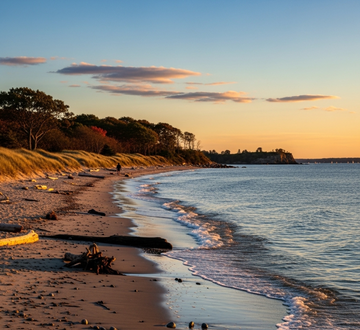The debate between East Coast and West Coast oysters is a classic for any seafood lover. Understanding the fundamental differences in their flavor, texture, and appearance can elevate your dining experience, whether you're a curious newcomer or a seasoned connoisseur. This guide breaks down the unique characteristics of oysters from each coast to help you discover your personal preference.
The Profile of East Coast Oysters
East Coast oysters, grown in the colder waters of the Atlantic, are celebrated for their bold, savory flavors and satisfyingly firm texture.
-
Blue Point Oysters:
-
Origin: Long Island Sound, New York and Connecticut.
-
Flavor: Mildly salty with a clean finish.
-
Texture: Firm and meaty.
-
Wellfleet Oysters:
-
Origin: Cape Cod, Massachusetts.
-
Flavor: High brininess with a sweet, seaweed-like finish.
-
Texture: Plump and crisp.
-
Chesapeake Bay Oysters:
-
Origin: Chesapeake Bay, Maryland and Virginia.
-
Flavor: Mild brininess with a sweet, buttery taste.
-
Texture: Medium-firm.
-
Prince Edward Island (PEI) Oysters:
-
Origin: Prince Edward Island, Canada.
-
Flavor: High brininess with a clean, crisp finish.
-
Texture: Firm and plump.
The Profile of West Coast Oysters
Thriving in the nutrient-rich Pacific Ocean, West Coast oysters are known for being sweeter and creamier with a softer texture.
-
Kumamoto Oysters:
-
Origin: Humboldt Bay, California.
-
Flavor: Sweet and fruity with a melon-like finish.
-
Texture: Creamy and smooth.
-
Olympia Oysters:
-
Origin: Puget Sound, Washington.
-
Flavor: Sweet and coppery with a hint of celery.
-
Texture: Small and delicate.
-
Pacific Oysters:
-
Origin: Various locations along the Pacific coast.
-
Flavor: Mild brininess with a creamy, sweet taste.
-
Texture: Plump and tender.
At a Glance: East vs. West Coast Oysters
This table provides a simple breakdown of the main differences between the two varieties.
|
Characteristic |
East Coast Oysters |
West Coast Oysters |
|
Flavor |
Generally saltier and more robust. |
Sweeter and creamier. |
|
Texture |
Firmer. |
Softer and more delicate. |
|
Size & Shape |
Tend to be larger and more elongated. |
Often smaller with a deeper cup. |
|
Water Influence |
Colder, saltier Atlantic water creates bold flavors. |
Varied Pacific nutrients result in complex, sweet profiles. |
Export to Sheets
How to Choose the Right Oyster for You
Choosing your favorite comes down to personal taste. Here are a few tips to guide your selection:
-
Sample a Variety: The best way to find what you like is to try different oysters from both coasts to experience the full range of flavors and textures.
-
Consider the Pairing: East Coast oysters pair well with crisp, dry wines like Sauvignon Blanc. West Coast oysters are a great match for sweeter, fruitier wines like Riesling.
-
Think About the Occasion: Robust East Coast oysters are perfect for a classic seafood platter. Delicate West Coast oysters can shine in a more refined dish.
Frequently Asked Questions (FAQ)
Which oysters are saltier, East Coast or West Coast? East Coast oysters are generally saltier and more robust in flavor, which is a result of the cold, salty Atlantic waters where they grow.
Which oysters are sweeter? West Coast oysters are known for being sweeter and creamier than their East Coast counterparts. The Kumamoto variety is particularly known for being sweet and fruity.
What is a popular East Coast oyster? Popular East Coast varieties include Blue Point oysters from New York and Connecticut, Wellfleets from Massachusetts, and PEI oysters from Canada.
What wine should I pair with my oysters? For briny East Coast oysters, a crisp, dry white wine like Sauvignon Blanc is a great choice. For sweeter West Coast oysters, a fruitier wine like a Riesling will complement their flavor.


